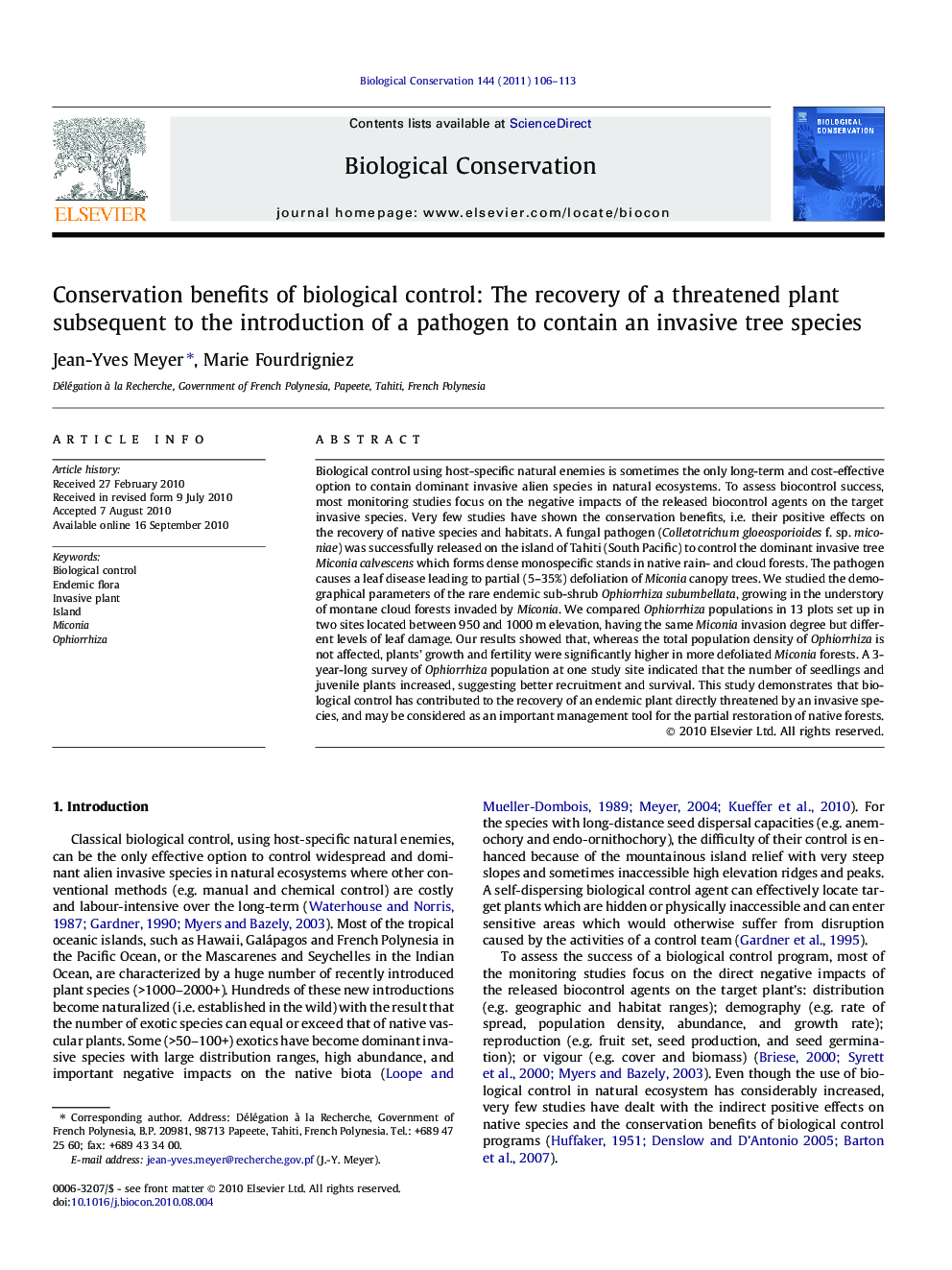| کد مقاله | کد نشریه | سال انتشار | مقاله انگلیسی | نسخه تمام متن |
|---|---|---|---|---|
| 4385668 | 1304547 | 2011 | 8 صفحه PDF | دانلود رایگان |

Biological control using host-specific natural enemies is sometimes the only long-term and cost-effective option to contain dominant invasive alien species in natural ecosystems. To assess biocontrol success, most monitoring studies focus on the negative impacts of the released biocontrol agents on the target invasive species. Very few studies have shown the conservation benefits, i.e. their positive effects on the recovery of native species and habitats. A fungal pathogen (Colletotrichum gloeosporioides f. sp. miconiae) was successfully released on the island of Tahiti (South Pacific) to control the dominant invasive tree Miconia calvescens which forms dense monospecific stands in native rain- and cloud forests. The pathogen causes a leaf disease leading to partial (5–35%) defoliation of Miconia canopy trees. We studied the demographical parameters of the rare endemic sub-shrub Ophiorrhiza subumbellata, growing in the understory of montane cloud forests invaded by Miconia. We compared Ophiorrhiza populations in 13 plots set up in two sites located between 950 and 1000 m elevation, having the same Miconia invasion degree but different levels of leaf damage. Our results showed that, whereas the total population density of Ophiorrhiza is not affected, plants’ growth and fertility were significantly higher in more defoliated Miconia forests. A 3-year-long survey of Ophiorrhiza population at one study site indicated that the number of seedlings and juvenile plants increased, suggesting better recruitment and survival. This study demonstrates that biological control has contributed to the recovery of an endemic plant directly threatened by an invasive species, and may be considered as an important management tool for the partial restoration of native forests.
Journal: Biological Conservation - Volume 144, Issue 1, January 2011, Pages 106–113